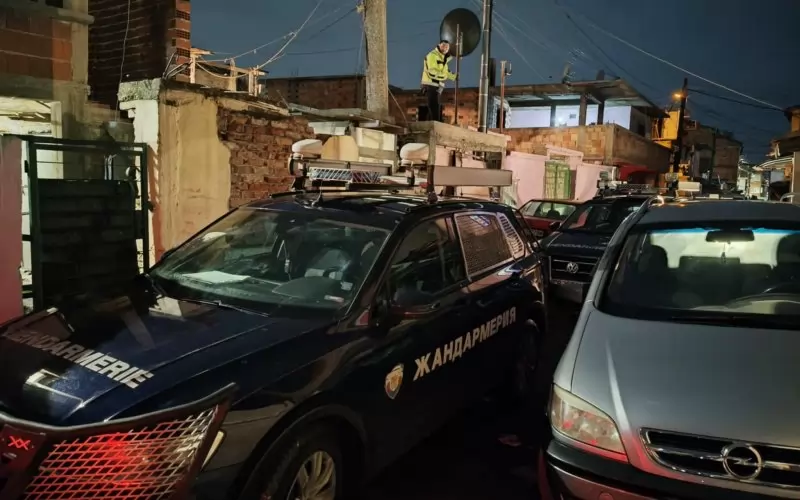Schelp (2013) provides information on the work of so-called Rroma mediators, who in Germany mediate between teachers and newly enrolled Rroma children. One of them is Valentina Asimovic. She helps a teacher in Berlin-Kreuzberg in her work with a class without any knowledge of German. The quoted sociologist Christoph Leucht sees a lack of education amongst many immigrant families. A majority of families rate the importance of education as low, because they themselves only enjoyed minimal training. To counterbalance this view into is important in order to offer the largest possible selection of options for the future of the children. In this perspective, one needs to add, that by no means all immigrants are from educationally disadvantaged social strata. There are also very educated immigrants, but not in the spotlight of media attention. That all parents want to marry off their daughters early and send their sons as early as possible to work also needs to be relativised. The work of the mediators has proved to be very helpful. They are far more than mere translators. They help in conflicts between teachers, students and their families and enable better integration of all involved. In spite of the positive perspective, the article does not succeed to alleviate many stereotypes about the supposed backwardness of Rroma. The impression remains that the great part of them consists of illiterates and women willing to bear child. The article ends with the not really positive statement: “A letter would make no sense: the Roma parents often cannot read it.”
Köhler (2013) covers the same subject with a focus on the “Welcome Class” for Rroma children in Neukölln. Already in the beginning of the article, she falls article in ethnic faux pas. She attests taht the children do not know what social rules are and how to behave in a group. The focus, however, is the visit of the Romanian Rroma responsible Damian Draghici, who was invited by the local education Councillor Franziska Giffey. Around 800 children from Romania currently go to school in Neukölln. The integration of children was very successful in terms of learning the language and structures. However, there were more problems among the children themselves. Many Rroma children were marginalised by children of Turkish and Arab descent. The centre topic of Damian Draghici’s book is, among others, the question of the inefficient integration policy in Romania: Why do so many subsidies are go unused, and how the bilateral policies on the integration of Rroma can be improved.
Kimmel Fichtner (2010) reported in 2010 about the Amaro Kher school in Cologne. There, Rroma children are prepared for the public schools. The goal is “to break vicious circle of misery, exclusion, lack of education and crime.” A media campaign representing Rroma children as thieves is the cause of the school creation. The city of Cologne then decided together with the association Rom e.V. to support the Amaro Kher school. During a year children are prepared for the have public schools and receive intensive preparatory German courses, learn the basics of reading, writing and arithmetic. In addition, they should develop a resilience to difficult situations. According to the insiders, the project has been successful and allows many of the children a better future.
Borchard (2013) covers the situation of Rroma in Romania. He focuses on the fate of Neli Moc, who goes regularly for two months to do harvest work on a farm in Germany. With the money earned there – about 2,000 euro – she can live relatively well for the rest of the year: “Neli Moc is an example that most Romanians, also those from the poorest backgrounds, come to work in Germany quite legally.” As contrast, Borchard tells the story of the Grozav family. According to the mother, they went to France because of paid return assistance of 300 euro per person and stayed there several weeks. The short article concludes with the statement: “One thing is clear among Roma families in Apoldu de Sus [Romania]. As long as the conditions do not improve in Romania, they will keep trying to come to Germany or France either as harvesters, or in the hope of doctors visits or return premiums.”
Bogdal (2013) begins his article on the Rromadebatte with a quote from Thomas Mann. He set firmly in 1945: “A nation, with whom no one can live, how can it live itself” Thomas Mann did not mean anything about Rroma, but was speaking about Germans. After the end of the Nazi regime, many ethnic Germans in in Poland, Czechoslovakia and Romania, had a real image problem for the residents of their host countries. They were marginalized, displaced and forced to do the simplest work: “Exiled, despised because of their ethnicity, having become homeless, without possessions and shelter. millions [German] moved westward from region to region, suspiciously regarded, often exploited, often forced to beg and to do menial work until they could gain a foothold anywhere. The same could be said of Roma today.” Bogdal sees the fate of Rroma after the collapse of the socialist system as very similar. Many Rroma are attracted away to Western Europe where better economic conditions and less discrimination awaits them, a move encouraged by the removal of borders in the wake of the consolidation of the European Union. Bogdal criticizes that the issue is being hyped as security policy issue, rather than to be accepted as a socio-political challenge to master and to solve bilaterally with the countries of origin.
There follows a paragraph about their migration from India and arrival in Europe. After a short period of acquiescence follows a tradition of exclusion, contempt and negative identity attribution, leading, according to Bogdal to criminalization and ethnicisation of poverty. Since the Enlightenment, they are often described as illiterate with no history, science, and without their own state. Thus, the idea that living together with the Rroma is not possible was consolidated in the minds of many. Even their mere presence is a threat. In this context, phenomena such as mountains of waste, child labour, prostitution or bands of tugs can be described as cultural ones, even though they have nothing to do with culture. Bogdal sees it as a pan-European task to further integration and acceptance of Rroma. This has to happen in Germany but especially in countries with a large Rroma population such as in Romania, Bulgaria, and Hungary. Bogdal’s article provides knowledgeable and eloquent to information about the situation of Rroma in Europe. He doesn’t present a simplified picture but attempts to address the complexity of the issue itself. We wish for more such articles.
Schmidt (2013) discusses the processing of the Holocaust by the German Federal Ministry of Justice (BMJ). The Central Council of German Sinti and Roma has asked the ministry to investigate the discrimination of Rroma by the German post-war justice. Romani Rose, chairman of the Central Council clearly states that “The continuing exclusion and discrimination of our minority at the hand of former perpetrators in their new positions after 1945 continued almost unbroken and shaped the resentment against Sinti and Roma.” He refers to the continuity of the commissions and expert from before and after the war, which were maintained by embedding them within the Justice Department and allowing to continue their anti-minority policies. It was thus possible for the lawyer Franz Maßfeller, despite his support and participation in Nazi racial policies, to continue to work until 1964 after the war in a high position within the Federal Ministry of Justice.
Bauerdick’s (2013) book, “Gypsy: Encounters with unloved people” tries to find a direct path to the world of the Rroma. Bauerdick thinks little of intellectual discourses, deconstructions of external attributions and anti-Gypsy research. He shows to an almost radical pragmatism and, through his many years of research trips, promises to provide a realistic picture of the life of the Roma in Europe. He embarks on this tricky terrain and decidedly does not want to be politically correct. He reproaches the Rroma to lack responsibility. Many have made it so comfortable for themselves to be perceived as victims and have now taken this view as their own. In his very emphatic descriptions of life in the slums, which present Rroma as cheerful as well as apathetic and inactive about their own situation, Bauerdick commits the mistake of excessively culturalising his own experiences and of generalizing. He is generalizing in the preface when he states: “For there is also another truth. After countless meetings in more than twenty years, I remember nary a Rrom who wanted a piece of responsibility for themselves as the root of his misery, never mind who acknowledged it.” Compared to the complexity of the reality of Rroma, he falls short. This reality is not just consisting of Rroma in the slums of Europe, but also includes invisible Rroma in Western European countries, Rroma to which one can not just quickly go with the car and camera due to their integration and blandness. But they form part of the Rroma reality exactly as much as the visible Rroma Rroma, that Bauerdick describes in his book. If you read only Bauerdick’s book and not others such as like Bogdals’s book “Europe invented the Gypsies”, one can believe that all Rroma have many children, live in slums and wait for a better life that never happens.
On the other hand, one must agree with him when he denounces the fact that the reasons for many Rroma’s misery is only being looked at in the structures of society and xenophobia, but not among Rroma themselves. He is certainly right, but he does them wrong when he reduces it only to their own power of action, which is very limited in for many. To say that intellectuals and anti-Gyspsyism researcher do not trust Rroma to do something for themselves, simplifies reality too much. When Günter Grass says that Rroma have no voice, he means their weakness in relation to national policies, but not the ability of individuals to change something about their situation. Also, the statements that intellectuals would only ever see Rroma as victims and deny their own responsibility falls short. These statements do not take into account the evident imbalance of power in society, power consisting of structures, policies and spread of knowledge as well as from individual action. Bauerdick does not do justice to the complexity of these circumstances in his polemical descriptions. When he uncritically cites passages from Karl Gauss’ bok “The dog eaters Svinia”, where Rromakönige, begging gangs and mafia-like structures are described as part of the Rromakultur, he commits the very same mistake against which he actually writes: He ethnicises the poverty phenomena and describes the mutual exploitation of Rroma as a cultural problem.
Sources:
- Bauerdick, Rolf (2013) Zigeuner: Begegnungen mit einem ungeliebten Volk. München: Deutsche Verlags-Anstalt.
- Bogdal, Klaus-Michael (2013) Leben mit Hass und Verachtung. In: Süddeutsche Zeitung vom 10.6.2013.
- Borchard, Ralf (2013) Warum Roma nach Deutschland kommen. In: Bayrischer Rundfunk vom 11.6.2013.
- Kimmel-Fichtner, Tatjana (2010) Eine Schule für Romakinder. In: Zeit online vom 15.11.2010.
- Köhler, Regina (2013) Neukölln ist in Berlin das Zuhause der Roma-Kinder. In: Berliner Morgenpost vom 14.6.2013.
- Schelp, David (2013) „Er wird es schon lernen“. In: Die Zeit vom 9.6.2013.
- Schmidt, Wolf (2013) Roma wollen Geschichte klären. In: Die TAZ vom 10.6.2013.







